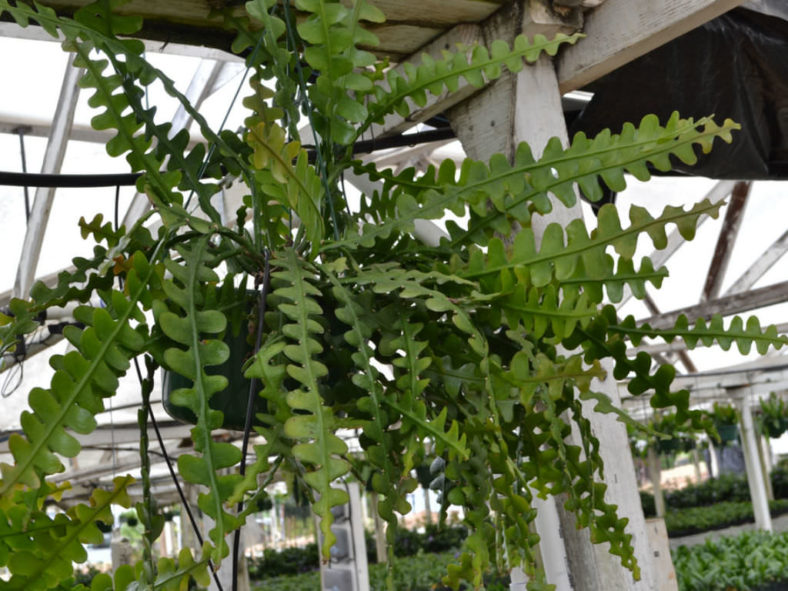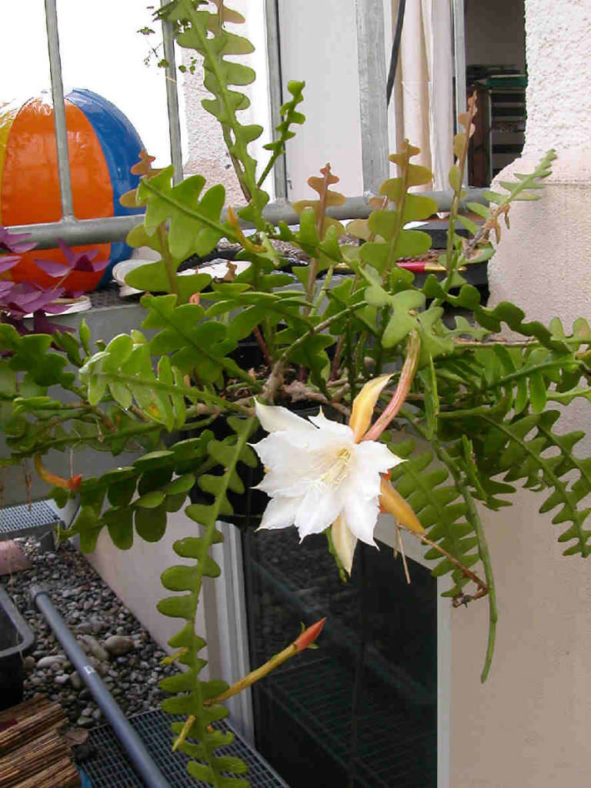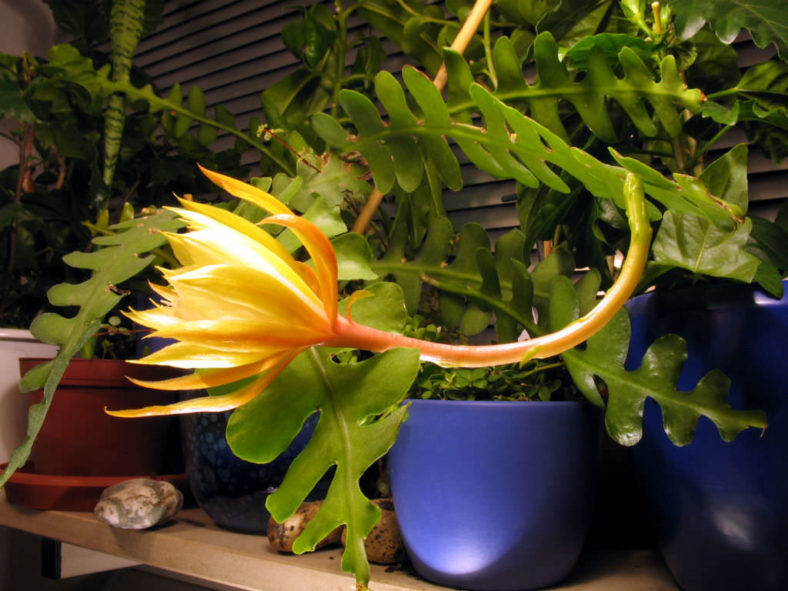Scientific Name
Disocactus anguliger (Lem.) M.Á.Cruz & S.Arias
Common Name(s)
Fishbone Cactus, Moon Cactus, Queen of the Night, Ric Rac Orchid Cactus, Zig-Zag Cactus
Synonym(s)
Epiphyllum anguliger, Epiphyllum anguligerum, Phyllocactus anguliger
Scientific Classification
Family: Cactaceae
Subfamily: Cactoideae
Tribe: Hylocereeae
Genus: Disocactus
Etymology
The specific epithet "anguliger" (pronounced "an-GYOO-lih-ger") means "angle-bearing" and refers to the deeply lobed branches of this species.
Origin
Disocactus anguliger is native to Mexico. It grows as an epiphyte in evergreen forests at elevations ranging from 3,600 to 5,900 feet (1,100 to 1,800 m) in Oaxaca, Guerrero, Michoacán, Jalisco, and Nayarit.
Description
Disocactus anguliger, formerly known as Epiphyllum anguliger, is a highly branched cactus with smooth, green, often woody primary stems and flat, fleshy, deeply lobed branches. The branches are initially upright, but become more pendulous as they age and elongate. They can grow up to 12 inches (30 cm) long and 2 inches (5 cm) wide. The lobes are rectangular or slightly rounded in shape.
The flowers, which are white or pale yellow, appear in summer, open at night, and exude a strong, sweet scent. They can reach a length of 8 inches (20 cm) and a diameter of 3 inches (7.5 cm). The fruits are greenish or yellowish with green pulp and tiny black seeds. They are oval and can grow up to 1.6 inches (4 cm) in diameter.

How to Grow and Care for Disocactus anguliger
Hardiness: USDA hardiness zones 10b to 11b: from 35°F (1.7°C) to 50°F (10°C).
Many of the cultivated plants known as Epiphyllum hybrids are derived from crosses between species of Disocactus (rather than Epiphyllum) and other genera in the Hylocereeae.
Disocactus should be grown in rich, yet well-draining, soil. They should be watered regularly and fertilized as well. This is essential for good growth and flowering. During the growing period, the plants need frequent watering. The watering should be relatively abundant, so that the soil becomes completely soaked, but allow the soil to dry out between waterings. Keep relatively dry in winter or when night temperatures remain below 50°F (10°C).
These cacti dislike extreme heat and cold, so they are best kept in greenhouses during the depths of winter and the heat of summer in hot, dry climates. They also prefer shade to the sun and like a little extra humidity.
Disocactus can be reproduced both by seeds and cuttings.
Learn more at How to Grow and Care for Disocactus.
Links
- Back to genus Disocactus
- Succupedia: Browse succulents by Scientific Name, Common Name, Genus, Family, USDA Hardiness Zone, Origin, or cacti by Genus
Photo Gallery
Click on a photo to see a larger version.


